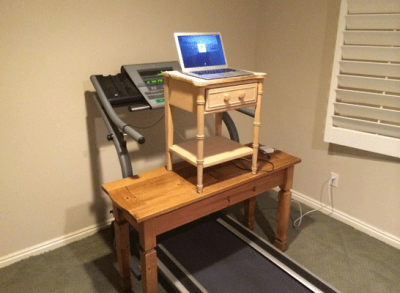#116 10 Reasons Why Spicy Foods Are Good For Your Heart
August 8th, 2015 by Dr. John DayPodcast: Play in new window | Download
Subscribe: RSS
10 Reasons Why Spicy Foods Are Good For Your Heart
“Have some more,” Mr. Wang said as he eagerly put more food on my plate.
“No thank you,” I tried to respond in Chinese, but no words came out. My mouth was on fire and my eyes watering. I really wanted to be a grateful guest but the red hot chili peppers in this Sichuan Chinese dish was far spicier than I had ever experienced before in my life.
Surely, I thought, this much must put me at increased risk for ulcers and it couldn’t be healthy. Now, 29 years later, there is compelling scientific data that we should eat spicier food. In fact, these spices may be a key factor to great health and longevity.
In this article, I share 10 scientifically proven reasons why spicy foods are good for your heart. If you are looking for a very quick summary of this article, here is a TV appearance I did to discuss this blog.
Do Spicy Foods Cause Ulcers?
Growing up, conventional wisdom held that spicy foods caused acid reflux and stomach ulcers. In fact, many medical experts of the day even recommended that we eat blander foods.
No doubt, some foods like pizza, sausage, and deli meats can aggravate “ulcer-like” symptoms. However, the active component of chili peppers, capsaicin, has been shown in many studies to prevent or reverse ulcers. Indeed, cultures or groups of people who eat the most chili peppers rarely get ulcers.
Why is the Media Now Discussing Spicy Foods?
Unless you have been on a “news fast” this past week, you have undoubtably heard many reports of the recent Harvard study on eating spicy foods. In fact, this study was discussed in nearly every major U.S. newspaper and media outlet this past week.
There is a good reason why this study deserved all of the attention it received. This was a mega-study. A study so large that it included 487,375 healthy Chinese people, ages 30-79, who were followed for an average of 7.2 years.
These Harvard researchers did a good job of controlling for 20 different lifestyle factors which could have influenced the results of this study, like smoking status, vegetable intake, exercise frequency, etc. so that they really were only looking at the mortality effects of eating chili peppers.
Over the course of this 7.2 year study, 20,224 of the study participants died. Researchers then analyzed the cause of all deaths and compared these findings to their self-reported intake of chili peppers.
10 Reasons Why Spicy Foods Are Good For Your Heart
Based on the results of this Harvard study, as well as other published studies, here are 10 compelling, and scientifically proven reasons, why spicy foods are good for your heart.
1. Lose Weight
As I have discussed in a previous blog (#60), many studies have shown that chili peppers decrease appetite and increase metabolism. This double combination can definitely kick start any healthy weight loss effort.
2. Healthy Gut Flora
Capsaicin, the active component in chili peppers, possesses powerful antibacterial properties. By keeping these bad bacteria away, some data suggests that capsaicin may promote a healthy gut flora. From other studies we are now learning that a healthy gut is a key factor in preventing heart disease.
3. Less Diabetes
While diabetes prevention likely goes hand-in-hand with weight loss and a healthy gut flora, studies show that chili pepper eaters have less diabetes. While this Harvard study did not convincingly show this, the study did show a trend toward less diabetes in people eating chili peppers at least three times a week.
4. Antioxidant and Anti-inflammatory Effects
Countless studies have confirmed that capsaicin has very potent antioxidant and anti-inflammatory effects. These effects assist the immune system in the balance between inflammation and infection control.
5. Better Immune System
As discussed above, capsaicin optimizes our immune system function. Is it any wonder then that in this Harvard study, chili pepper eaters were 26% less likely to die from infections if they ate chili peppers at least three times a week. This benefit was even greater in women where a 45% decreased risk of death from infections was seen.
6. Lower Blood Pressure
Capsaicin, through activation of the TRPV1 receptor, has significant blood pressure lowering effects. Ideal blood pressure control, in turn, has been shown to prevent atrial fibrillation, heart attacks, kidney failure, strokes, and dementia.
7. Less Cancer
Many studies confirm the anticancer properties of capsaicin. Indeed, in this Harvard study, researchers showed a modest 8% reduction in cancers in those people eating chili peppers on most days. Other studies have shown that cultures who eat a lot of spices, like India, have a much lower incidence of cancer.
8. Better Lung Function
A surprising finding of this Harvard study was that even just eating chili peppers once a week decreased your risk of dying from respiratory diseases by 33%. While researchers are still not sure of this connection, I suspect it likely has something to do with less respiratory infections.
9. Less Heart Disease
As you might expect, this Harvard study also showed much less heart disease deaths. Indeed, eating chili peppers at least once weekly decreased your chances of dying from a heart attack by 18%.
10. Live Longer
While most people don’t eat chili peppers to live longer, this spice is clearly linked to a longer lifespan. In this Harvard study, your risk of premature death was reduced by 14% if you ate chili peppers three times a week. Even those who ate chili peppers once weekly saw a 10% decreased risk of premature death.
Does It Matter How Often You Eat Chili Peppers?
Do you have to eat chili peppers every day to get all of the benefits we have discussed in this article? The simple answer is “no.” Most of the benefit appears to be from going from no chili pepper in your diet to eating some at least once weekly.
Fresh, Dried, or Processed?
While eating dried or processed chili pepper is easiest, from this Harvard study it appears that the greatest health benefits are seen with fresh chili peppers. For example, fresh chili peppers contain more potassium and vitamins C, A, K and B6.
A Contrarian View of This Study
Is capsaicin the “secret sauce” for good health or is there something else at play in this Harvard study? For the contrarians out there, let me offer several other explanations for the health benefits observed with chili peppers.
First, perhaps the benefit may simply be due to a selection bias. For example, people suffering from chronic medical conditions tend to prefer blander foods.
Second, healthier people are more likely to have the energy to cook at home with spices. Thus, once again, it may not be the chili peppers but rather the fact that healthier people are drawn to this spice.
Third, Chinese people cooking with chili peppers are also much more likely to include other spices, like garlic, ginger, and curry, which also have similar health benefits.
Closing Thoughts
With all of the compelling scientific data I have presented in this article, you would think that I was a regular chili pepper eater. Truth be told, I rarely eat it unless I am eating Chinese food at a friends’ house or at a restaurant.
My challenge for all of us is to try and include more spices in our cooking at home. Not only will our food taste much better but our health may also significantly improve!
Do you regularly cook with spices? What spices do you like to use the most? Please leave a comment below so that our community can benefit from your experience.






